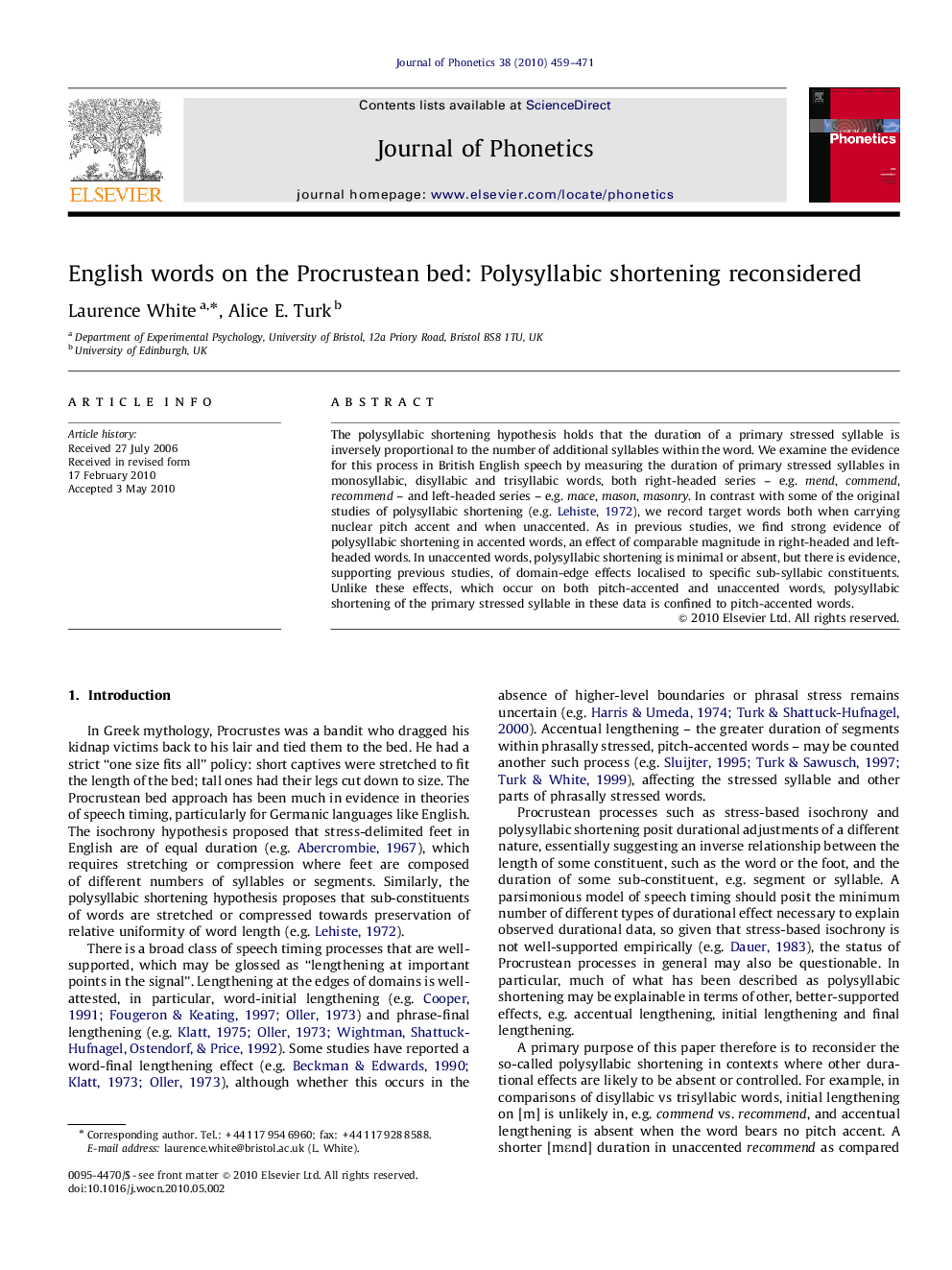| Article ID | Journal | Published Year | Pages | File Type |
|---|---|---|---|---|
| 1101096 | Journal of Phonetics | 2010 | 13 Pages |
The polysyllabic shortening hypothesis holds that the duration of a primary stressed syllable is inversely proportional to the number of additional syllables within the word. We examine the evidence for this process in British English speech by measuring the duration of primary stressed syllables in monosyllabic, disyllabic and trisyllabic words, both right-headed series – e.g. mend, commend, recommend – and left-headed series – e.g. mace, mason, masonry. In contrast with some of the original studies of polysyllabic shortening (e.g. Lehiste, 1972), we record target words both when carrying nuclear pitch accent and when unaccented. As in previous studies, we find strong evidence of polysyllabic shortening in accented words, an effect of comparable magnitude in right-headed and left-headed words. In unaccented words, polysyllabic shortening is minimal or absent, but there is evidence, supporting previous studies, of domain-edge effects localised to specific sub-syllabic constituents. Unlike these effects, which occur on both pitch-accented and unaccented words, polysyllabic shortening of the primary stressed syllable in these data is confined to pitch-accented words.
